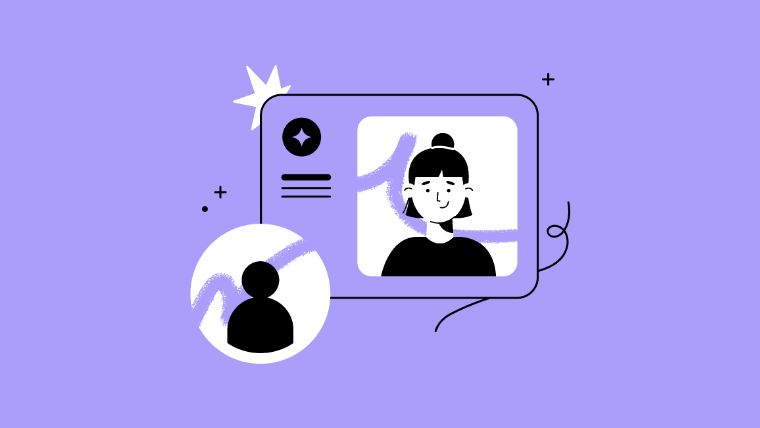Customer education is a crucial strategy businesses employ to educate their customers about their products or services. It involves providing valuable and educational resources to customers, enabling them to make the most of their purchase.
In this comprehensive guide, we’ll share seven different ways you can market your customer education programs.
The Importance of Customer Education
Customer education is essential for businesses as it enables them to build strong relationships with their customer base. By empowering customers with knowledge, businesses can improve the overall customer experience, leading to increased satisfaction and loyalty. Additionally, customer education helps businesses differentiate themselves from competitors and establish trust and credibility in the market.
Benefits of Customer Education
Customer education can help you organization reach a number of business goals, including:
- Increased customer retention
- Improved customer satisfaction
- Higher product adoption rates
- Reduced support costs
- Increased customer loyalty
In fact, a 2019 study conducted by Forrester found that 90% of companies saw a positive ROI from their customer education efforts. Formalized customer education programs drove even better results:
- 11.6% increase in customer satisfaction
- 6.1% decrease in support costs
- 6.2% increase in revenue
- 7.4% increase in retention
It’s clear there’s value to customer education—if we strategically invest in it.
Start with Marketing Basics
When the subject of marketing comes up, it’s easy to jump into tactics: What channel should we use? What should the email say? Let’s zoom out a little to cover a few basics.
1. Identify objectives and audience.
Marketing is most effective when we start at the top: What objectives are we trying to achieve? What audience(s) are we trying to target?
Your goal impacts your approach. Driving new learners to your online academy is one set of initiatives. Getting existing learners back into your learning platform to continue learning will require a slightly different approach.
The same is true of your audience. You’ll use different channels and messages to market to customers than marketing to partners or prospective customers.
2. Understand your customers’ pain points and motivation to learn.
Let’s be honest, no one is waking up in the morning thinking, “I can’t wait to go to this online academy today and learn. In fact, I think I’ll do that first thing!”
No, the reality is that our customers are busy people with other things competing for their time. We have to understand what’s driving our customers to learn. Then, we can harness those insights as key messages in our marketing.
(Marketing strategy is one piece of the overall customer education strategy. To see where marketing fits within the bigger picture, check out this blog.)
7 Strategies to Market Your Customer Education Programs
Once you’ve identified your goals and audience(s), you can implement some of the following marketing channels and tactics.
1. Email Marketing
One of the most popular channels for marketing education programs is email. Why? Because it’s an owned channel; but unlike social media, algorithm updates don’t limit your reach. If you educate a B2B audience, your audience checks their email regularly.
You can implement a number of different types of emails to promote your education offerings.
Welcome Emails
If you have a formal education program that people register for, send a welcome email to confirm a learner’s registration. Include courses and content for them to check out to get started.
Here’s an example of a welcome email from Atlassian University:

(If you’re using the Intellum Platform, you can set up a welcome email using Letters.)
Promotional Emails
These emails promote specific courses, certifications, or pieces of content. You might send a promotional email when launching a new education offering, or you might send these as part of an email series introducing learners to different courses they can enroll in.
Here’s an example of how Coursera promotes their course offerings:

Reminder Emails
Reminder emails encourage your learner to jump back in and continue their learning. In the customer education space, learners don’t necessarily have to complete programs. Providing timely reminders and compelling reasons to resume learning can help drive course completions and continued learner engagement.
In Intellum, you can use customizable nudges to remind learners to pick up where they left off:

Provide Bite-Sized Learning in Emails
Not every learning experience has to take place in your LMS. Consider other channels you can use to educate your learners—including right in their inbox! This can keep your education programs top of mind, and you can also tease out content where they can learn more/dig deeper in your LMS.
2. Social Media
If you educate external learners, social media might be an avenue for promoting your education offerings to both new and existing learners.
Just like with email, there are a variety of ways you can leverage social media to promote your education programs.
Share From Your Company Page
One of the easiest ways to use social media to promote your online academy is by sharing the enrollment link from your company page (along with some compelling copy).
Partnerships Experience Academy (PXA) does this well:

Encourage Learners to Share Their Certificates
Do you offer certificates or certifications? Encourage learners to share their certifications on LinkedIn to demonstrate their competency in a specific career-boosting skill. Some learning management platforms have this functionality built in, or you could use LinkedIn’s “Add to Profile” feature to make it easy for learners to share online.

Have Influencers & Employees Post About Your Customer Education Academy
Employee advocacy and influencer marketing can be a great opportunity to gain exposure to your online academy. Have your instructional designers and other content creators share their work. And invite other employees to amplify their efforts as well!
Here’s how Dan Tyre, an executive at HubSpot, uses his personal profile to promote HubSpot Academy’s learning content:

3. Website
Whether your education programs are for customers only or open to prospects, your website can be an opportunity to showcase your investment in learning.
Education is increasingly seen as a differentiator for businesses.. Customers want to work with companies that offer resources for onboarding, continuing product education, and professional development.
You can highlight your education programs using links in the header and footer navigation, like you see here with Personio:

You can also position your academy as a go-to destination on your website—something prospective customers can enroll in to start learning about your business, or a value-add for customers.
Check out how Gusto Academy positions their education programs as a huge benefit to their customers:

4. In-App
If you sell a SaaS solution, you can use in-app messages and notifications to promote your education programs.
Here are a few different ways to do this:
Built-in module on your dashboard or homepage
HubSpot incorporates lessons communicating concepts that tie to their product functionality on the dashboard of its product:

In-app modal
Or you might experiment with in-app modals, like G2U did:

In-app navigation
If your education team also creates just-in-time learning content, like help articles, you could use in-app navigation to surface relevant content or link to additional learning, like Certify does:

5. Internal Teams
The most successful education programs have owners who build relationships with other customer-facing teams (like customer success, the support team, marketing, and sales) to keep education top of mind.
These teams often have direct contact with customers and prospective customers—giving them opportunity to highlight what your team has created.
Here are some examples of how your internal teams can promote your education offerings:
Share in Newsletters
If your marketing team publishes a regular newsletter for customers and/or prospects, they can include on-demand education content or scheduled learning events.
This is one way we keep education top of mind for our customers:

Share in 1:1 Conversations
Your colleagues can also bring up education programs, events, and content in 1:1 conversations they have.
Empower customer-facing teams with templated language and even slides highlighting your education offerings to share with customers and prospects.
Include in Recurring Meetings
If your customer-facing colleagues host quarterly business reviews, kick-off calls, or onboarding meetings, you can ask them to incorporate your education program into those meetings, decks, and/or communications.
Sendoso customer success managers (CSMs) introduce Sendoso University during the onboarding process with a dedicated slide:

Christy Hollingshead, VP of Customer Education & Engagement at Heap, a product analytics platform, shared that 60% of Heap’s learners come from CSM referral. The team has even built education milestones into the customer journey to support continuous learning.
Christy’s advice for earning this type of CS-driven marketing: “In the beginning, it's sharing wins, time you've saved the team, positive feedback from their customers, increases in adoption, getting them to take the content, etc. Then, once you have buy in, you can make the ask to include education in their standard decks/comms.”
6. Share Case Studies and Success Stories
Just like you would with a product, find an existing customer who’s participated in your customer education and loved it. Highlight their voice, whether that’s through a video, a case study, or simply a quote.
Check out how our friends at Appcues, running Product Adoption Academy, share voice of the customer as part of their customer education marketing:

7. Use Search Engine Optimization
The No. 1 resource people use to find answers is search engines. Search engine optimization (SEO) is about improving peoples’ ability to find your site and your content.
Look at how Meta Blueprint does this. If you Google “learn Facebook advertising”, the first organic search result is their customer education program—despite the fact that thousands of other sites also teach you how to advertise on Facebook.

(Learn best practices for SEO for customer education in this blog.)
Start Somewhere and Grow Over Time
While examples can be helpful, sometimes they can be overwhelming! It can almost seem like there are too many ways to promote your education programs.
The key is to start somewhere—then grow over time. Talk with longstanding online academies, and you’ll learn that they didn’t always have the sophisticated marketing strategies in place that you might see today as a learner.
The Top Learning Management System for Marketing Customer Education
Not only does Intellum power some of the world’s leading customer education programs, it also has built-in functionality to help market and promote your programs—including the highest domain authority of any external enterprise LMS on the market.
See the Intellum Platform in action with an on-demand demo.



.png)

